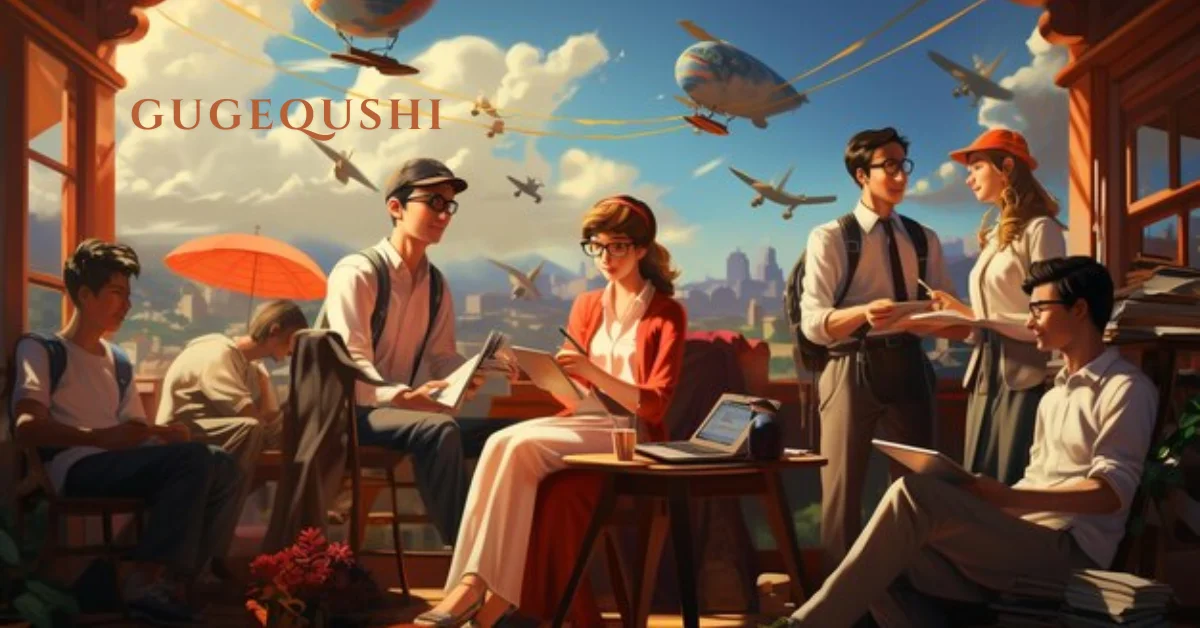Introduction to Gugequshi
Every culture has its unique way of weaving stories that reflect their values, beliefs, and history. One such captivating form is gugequshi—an artful blend of narrative and performance deeply rooted in tradition. Originating from the rich tapestry of Chinese folklore, gugequshi transcends mere storytelling; it encapsulates the essence of a people’s identity.
As globalization sweeps across nations, art forms like gugequshi find themselves at a crossroads. They must adapt to contemporary tastes while preserving their core essence. This delicate balance invites intriguing questions about cultural authenticity and relevance in today’s fast-paced world.
Join us on this journey as we explore what makes gugequshi so significant and how it’s evolving to captivate audiences far beyond its original borders. Discover why this age-old tradition matters now more than ever!
The Significance of Cultural Storytelling
Cultural storytelling serves as the heartbeat of a community. It weaves together shared experiences and beliefs, creating a tapestry rich with meaning.
These narratives are not just entertainment; they carry traditions and values from one generation to the next. Through stories, people learn about their history, morals, and identity.
In today’s fast-paced world, cultural storytelling fosters connection. It allows individuals to explore perspectives outside their own while embracing diversity.
Moreover, these tales can challenge societal norms and spark important discussions. They encourage empathy by placing listeners in different shoes.
As cultures blend in our global society, the significance of storytelling only grows. Each narrative becomes a bridge—uniting us across boundaries while celebrating uniqueness.
How Gugequshi Has Evolved Over Time?
Gugequshi has a rich history that showcases its dynamic nature. Originally rooted in oral traditions, these tales were passed down through generations. Storytellers played a crucial role, preserving cultural heritage while adapting narratives for their audiences.
As society changed, so did gugequshi. The introduction of written forms allowed stories to reach wider audiences. This shift helped solidify themes and characters but also led to new interpretations.
With the rise of digital media, gugequshi embraced technology. Social platforms became stages for modern storytellers, blending tradition with contemporary flair. Animation and podcasts breathed new life into age-old tales.
This evolution hasn’t just been about form; it’s also encompassed content. Gugequshi began integrating global themes and diverse perspectives, enriching the narrative landscape even further. Today’s storytellers are not just narrators—they’re innovators reshaping what gugequshi means in our interconnected world.
The Spread of Gugequshi to a Global Audience
Gugequshi has transcended borders, captivating a diverse global audience. With the rise of digital platforms, traditional storytelling methods have found new life online.
Social media channels are buzzing with creative adaptations and interpretations of gugequshi tales. Platforms like TikTok and Instagram showcase snippets that resonate with younger generations seeking quick yet profound narratives.
International festivals and cultural exchanges further amplify its reach. Performers from various countries infuse their unique styles into gugequshi, enriching the tradition while making it accessible to different cultures.
This cross-pollination not only celebrates its origins but also invites new voices to contribute. As storytellers from around the world engage with gugequshi, they create fresh dialogues that challenge perceptions and expand its narrative horizons.
With each retelling, this ancient art form continues to evolve in exciting ways, ensuring it remains relevant amid a rapidly changing landscape.
Challenges and Controversies Surrounding Gugequshi
Gugequshi faces numerous challenges in its journey toward global recognition. One major hurdle is the preservation of authenticity amidst commercialization. As the art form gains popularity, there’s a risk that traditional narratives may be diluted to cater to broader audiences.
Additionally, cultural appropriation is a pressing issue. Many artists and enthusiasts engage with gugequshi without fully understanding its roots. This can lead to misrepresentation and disrespect towards the original storytellers.
Another controversy arises from differing interpretations of stories and themes within gugequshi. What resonates deeply with one community might not hold the same significance for another, sparking debates over ownership and narrative fidelity.
These complexities create an intricate landscape for gugequshi as it strives to maintain its essence while appealing to new listeners worldwide. The balance between adaptation and tradition remains delicate yet crucial in this evolving discourse.
Reimagining Gugequshi for the Modern Age
Reimagining gugequshi involves embracing technology and modern storytelling techniques. Digital platforms can amplify voices that were once marginalized. Podcasts, animated shorts, and social media threads now serve as new canvases for these ancient tales.
Interactive storytelling also invites audiences to engage on a deeper level. Imagine readers choosing their paths through narratives rooted in gugequshi traditions. This interactivity breathes fresh life into stories while honoring their origins.
Collaborations with contemporary artists can transform traditional themes into visual masterpieces. By blending old with new, these creations resonate across cultures and generations.
Moreover, integrating global issues like climate change or social justice into gugequshi could attract wider attention. It allows the stories to remain relevant while educating audiences about pressing matters.
Emphasizing diversity within the narrative structure itself can create richer experiences for everyone involved. Through such innovations, gugequshi continues its journey while holding onto its rich heritage.
Conclusion: The Future of Gugequshi in a Globalized World
The future of gugequshi lies in its ability to adapt while staying true to its roots. As it reaches a global audience, the essence of these stories can remain intact, even as they undergo transformation. The interplay between tradition and innovation will define how new generations connect with this art form.
As cultural exchanges continue to flourish, gugequshi has an opportunity to carve out a prominent place in the storytelling landscape. Digital platforms are providing access like never before, allowing diverse voices and interpretations to emerge. This not only enriches the narrative but also invites more people into the conversation.
However, challenges persist. Misinterpretations or commodification may threaten authentic representations of culture. There remains a delicate balance between sharing stories widely and preserving their original meanings.
Through thoughtful engagement and respect for traditions, gugequshi can thrive globally without losing its unique identity. Embracing modernity while honoring history is key for storytellers today. With each tale told, there is potential for deeper understanding across cultures—an invitation that resonates beyond borders.
As we look ahead, it’s clear that gugequshi’s holds immense promise in our interconnected world. A fusion of past narratives with contemporary themes could pave new paths for exploration and appreciation within storytelling traditions everywhere.
ALSO READ: someboringsite.com: Back to Basics – Pure Content, Zero Fluff
FAQs
What is Gugequshi?
Gugequshi is an ancient Chinese storytelling tradition that blends narrative and performance, deeply rooted in cultural history and identity.
How has Gugequshi’s evolved over time?
Originally passed down orally, Gugequshi’s has embraced written forms and digital media, integrating modern technology and global themes while maintaining its cultural essence.
What challenges does Gugequshi’s face in the modern world?
Gugequshi’s faces risks of authenticity loss, cultural appropriation, and differing interpretations as it gains global popularity and adapts to new audiences.
How has Gugequshi’s reached a global audience?
Through digital platforms like TikTok and Instagram, Gugequshi’s has spread globally, with international performances and creative adaptations bringing new voices into the tradition.
Why is reimagining Gugequshi important?
By embracing modern storytelling methods, such as podcasts, animation, and interactive formats, Gugequshi can remain relevant while honoring its rich cultural heritage.











